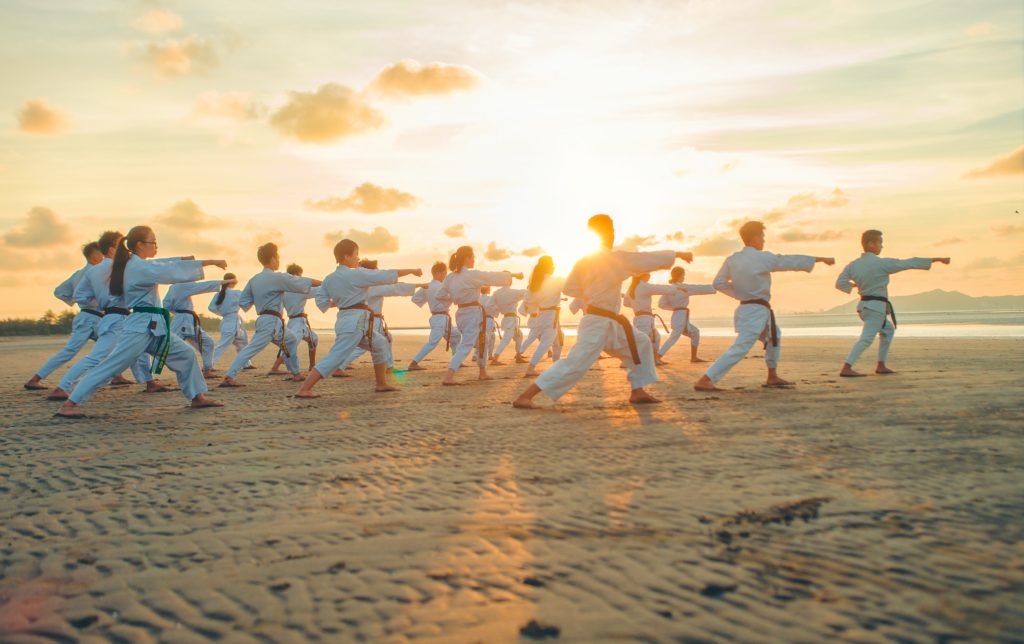I remember being taught at an early age that humans have five senses – hearing, sight, smell, taste, and touch. You can imagine, then, how shocked I was to later learn that humans don’t just have those five fundamental senses but as many as 21! Among these more subtle senses are thermoception (your ability to perceive temperature), nociception (your ability to perceive pain through injury), balance, and proprioception — your inherent sense of your body’s position and motion in space.
Awareness of your proprioceptive sense is not only beneficial for your ability to carry out everyday activities but also for your ability to do any kind of highly-skilled activity. It provides an intimate peek into how exactly you’re able to move through the world with precision and fluency. And just like your other senses, proprioception is something that becomes more responsive with increased awareness.
What Is Proprioception?
Proprioception is a major player in your ability to recognize your body schema, or your body’s felt sense. This self-awareness is detected through receptors in your muscles, tendons, and skin. Your brain creates your body schema from the interaction of touch, vision, balance, hearing, and proprioception and even extends it out into the space around your body. Hello, personal space!
Think back to when you were an adolescent and went through a growth spurt. You may have experienced a period of clumsiness and lack of coordination as a result. Perhaps during your soccer season that year, you suddenly found yourself having difficulty kicking the ball with accuracy. Or maybe, seemingly out of nowhere, you started underestimating the distance of your alarm clock from your bed and consequently knocked it off your nightstand a few times.
These periods of awkwardness occur because growth spurts induce considerable recalibration of your body schema and sense of proprioception. As you move through your day, you’re constantly taking in new sensory information and updating your body schema with the help of proprioception. And because of this sophisticated sensory ability, it’s not necessary to actually see your body parts to know where they are in space.

To put this into more digestible terms, try this quick experiment:
Either seated or standing, close your eyes. Bring your right hand across your body to touch your left elbow. Or bring your left hand to touch the tip of your nose. Your ability to sense where each of your body parts is and where they need to go to complete either movement without obstruction is proprioception. Crazy, right?
More complex proprioceptive movements include knowing the exact pressure to comfortably and securely hold a baby chick, knowing how far to kick a soccer ball to reach the goal net, or walking up or down a staircase without looking at your feet.
Why Is Proprioception Important?
Proprioception plays a crucial role in coordination, alignment, body awareness, and even self-regulation. The awareness of body segments in space is crucial for humans to communicate effectively with their environment.
When our proprioceptive system isn’t functioning properly, it doesn’t just impact seemingly low-stakes activities, such as lightly bumping into doorframes or writing down your grocery list with too much force. Poor proprioception can also result in serious injury or trauma.
Take a session of intense exercise, for example. It’s common to feel awkward and clumsy after intense exercise, not just from muscle fatigue. You are less sure about the placement of your fatigued limbs if you are not looking at them because intense exercise also disturbs proprioception. Without this crucial sensory information, you’re more likely to overexert yourself and move in an uncoordinated way, potentially leading to injury.
Proprioception isn’t just about moving through the world with grace. It’s about establishing what you and your unique design are capable of doing at any given time.

Exercises To Wake Up Your Proprioceptive Sense
Your proprioceptive sense is best honed through movement. Specifically, when you work in some form of movement training, such as dance, yoga, Tai Chi, or the Alexander Technique, you are enhancing your body schema awareness. These methods teach you to purposefully attend to the many core elements of your schema as a means of self-exploration.
Outside of formal training, there is a multitude of experiments for exploring and sharpening this fascinating sixth sense. Here’s a list of a few simple exercises to get you started:
- In a safe space (meaning free from obstacles), turn on your favorite soothing song and close your eyes. As you listen to the music, move your whole body smoothly and continuously, noticing how different body parts move in different ways. Play with extension, contraction, bending, expanding, etc.
- Stand on one leg, paying attention to all the micromovements you notice as you find stability. After a few moments on one leg, switch to the other side. As an added challenge, try this same experiment on a Bosu balance trainer or wobble board.
- Find a recording of a body scan exercise and listen with closed eyes while in Savasana or other comfortable resting position. A quick google search will offer several options for recordings. I personally love using this app for both body scans and other meditation practices.
There is so much more to dive into when it comes to proprioception, such as the use of mirror boxes for stroke patients or the developing field of sensory anthropology. However, this article is a mere introduction to the captivating world of your own physiology. I hope this introduction kindled some appreciation for the exquisite, complex systems that make you… well, you!
Sources
Araujo, Laura. Are Your Brain and Body Friends? Interoception May Be The Adhesive For Their Relationship – or the Reason Their Partnership Needs Work. The MAPS Institute, 11 Oct. 2021, https://themapsinstitute.com/are-your-brain-and-body-friends-interoception-may-be-the-adhesive-for-their-relationship-or-the-reason-their-partnership-needs-work/.
Blakeslee, Sandra, and Matthew Blakeslee. The Body Has a Mind of Its Own, Random House Trade Paperbacks, 2008, https://www.penguinrandomhouse.com/books/14618/the-body-has-a-mind-of-its-own-by-sandra-blakeslee-and-matthew-blakeslee/.
Ferlinc, Ana et al. “The Importance and Role of Proprioception in the Elderly: a Short Review.” Materia socio-medica vol. 31,3 (2019): 219-221. doi:10.5455/msm.2019.31.219-221
Proske, Uwe, and Simon C. Gandevia. “The Proprioceptive Senses: Their Roles in Signaling Body Shape, Body Position and Movement, and Muscle Force.” Physiological Reviews, vol. 92, no. 4, American Physiological Society, Oct. 2012, pp. 1651–97. Crossref, doi:10.1152/physrev.00048.2011.
Plowman, Christopher, and Nicholas Plowman. Insight Timer. Insight Network, 2009. Apple App Store, https://insighttimer.com.
Thieme, Holm et al. “Mirror therapy for improving motor function after stroke.” The Cochrane database of systematic reviews vol. 7,7 CD008449. 11 Jul. 2018, doi:10.1002/14651858.CD008449.pub3
Howes, David, and Constance Classen, editors. “Epilogue.” The Varieties of Sensory Experience, University of Toronto Press, 1991, https://books.google.com/books/about/The_Varieties_of_Sensory_Experience.html?hl=&id=3t2cAAAAMAAJ.
